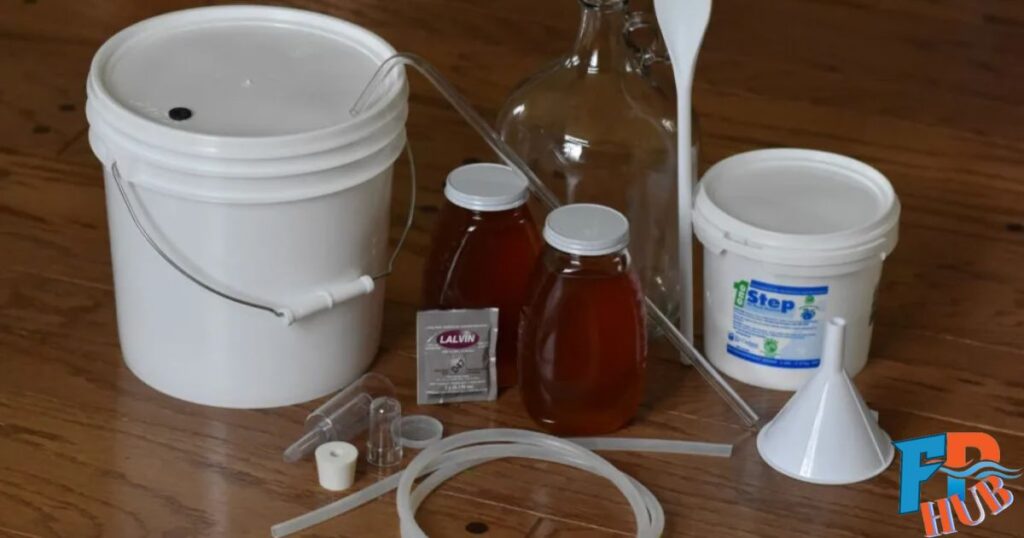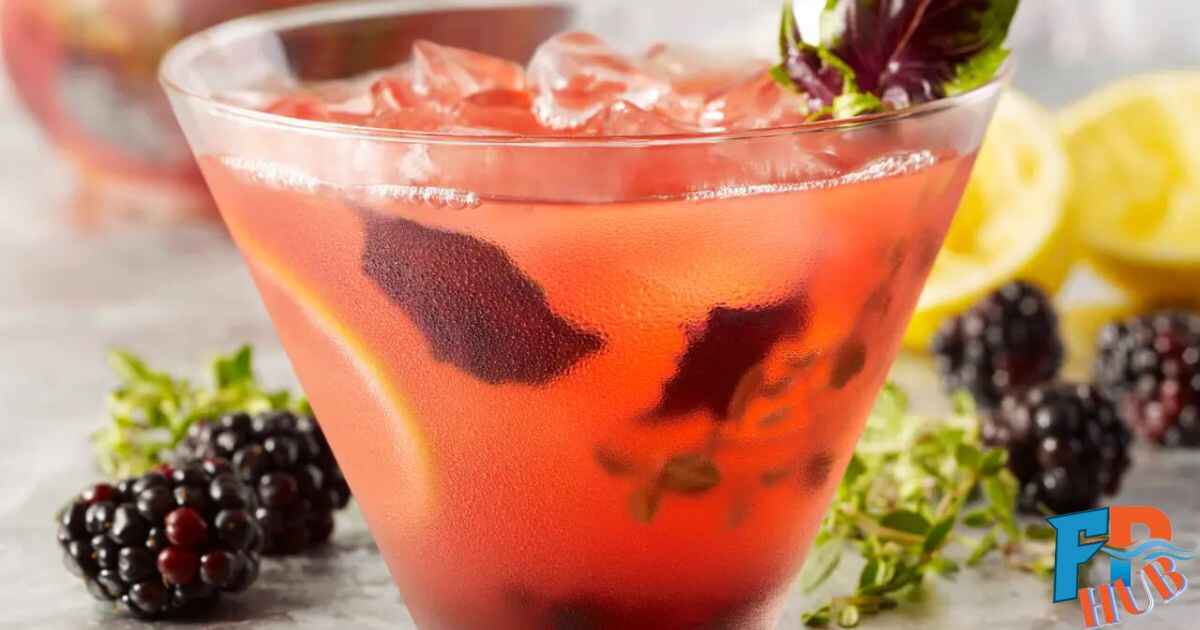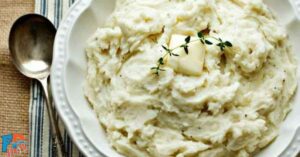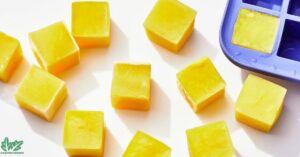Are you tired of the same old beverages? Do you crave something unique and flavorful that you can craft yourself? Look no further than blackberry mead, a delightful homemade drink that combines the sweetness of honey with the tangy richness of blackberries.
Many people feel intimidated by the idea of making their own mead, thinking it’s too complicated or time-consuming. But what if I told you that creating your own blackberry mead recipe is not only achievable but also incredibly rewarding?
In this comprehensive guide, we’ll walk you through every step of the process, from foraging for blackberries to bottling your finished mead. By the end, you’ll have all the knowledge and confidence you need to embark on your mead-making journey.
Blackberry Mead

Blackberry mead, a delightful variation of the ancient honey wine, has been captivating taste buds for centuries. This fermented blackberry wine combines the rich, fruity flavors of blackberries with the sweet complexity of honey. As of 2023, the popularity of homemade mead has surged, with more people discovering the joys of crafting their own unique brews.
The beauty of blackberry mead lies in its versatility. It can range from dry to sweet, still to sparkling, depending on the brewer’s preferences. This blackberry honey wine offers a perfect balance of tartness and sweetness, making it a favorite among mead enthusiasts and newcomers alike.
Understanding Mead Basics
What is Mead?
Mead, often referred to as honey wine, is an alcoholic beverage created by fermenting honey with water. This ancient drink has been enjoyed across cultures for thousands of years. Unlike grape wines, mead’s base is honey, which gives it a unique flavor profile and allows for endless variations.
When we talk about blackberry mead, we’re specifically referring to a type of mead called melomel. Melomels are fruit meads, where fruit is added to the honey base during fermentation. This addition of blackberries not only imparts a beautiful color but also adds depth and complexity to the final product.
The Magic of Blackberry Mead
Blackberry mead offers a flavor profile that’s truly enchanting. It combines the floral sweetness of honey with the bold, slightly tart notes of ripe blackberries. The result is a beverage that’s both refreshing and complex, perfect for sipping on a warm summer evening or pairing with a hearty meal.
Using blackberries in mead brings more than just flavor. These berries are packed with antioxidants and vitamins, potentially adding health benefits to your homemade brew. The natural acidity of blackberries also helps balance the sweetness of honey, creating a well-rounded mead that appeals to a wide range of palates.
Harvesting Blackberries for Your Mead
When and Where to Forage
Foraging blackberries for your mead is a rewarding experience that connects you with nature and your ingredients. In most regions, blackberries ripen from late July to early September. Look for wild blackberry bushes along forest edges, in abandoned fields, or even in urban green spaces.
When foraging, choose plump, fully black berries that come off the bush easily. Avoid berries that are red or have a hard core, as these are not fully ripe. Remember to leave some berries for wildlife and to ensure future harvests. Always obtain permission if foraging on private property.
Tips for Successful Blackberry Picking
For a successful blackberry mead recipe, you’ll need about 2-3 pounds of berries per gallon of mead. Wear long sleeves and sturdy gloves to protect yourself from thorns. Bring along a wide-mouthed container or basket to collect your berries without crushing them.
Be mindful of your surroundings while foraging. Watch out for poison ivy or other harmful plants that might be growing near blackberry bushes. It’s also a good idea to bring water and sunscreen, as blackberry picking can take longer than you might expect when you’re searching for the perfect berries for your mead.
Essential Equipment for Making Blackberry Mead

Basic Brewing Tools
To start your blackberry mead brewing journey, you’ll need some basic equipment. Here’s a list of essential items:
- Fermentation vessel (1-gallon glass jug)
- Airlock and rubber stopper
- Large pot for heating water
- Long-handled spoon for stirring
- Thermometer
- Hydrometer (optional, but useful)
- Siphon and tubing
- Bottles for storing finished mead
These tools will help you create a successful one gallon mead recipe. As you gain experience, you might want to invest in additional equipment like a wine thief or a bottle filler to make the process easier.
Sanitization Importance
Proper sanitization is crucial in the mead making process. Even small amounts of unwanted bacteria can spoil your mead or create off-flavors. Use a brewing sanitizer specifically designed for homebrewing, like Star San or Iodophor.
Sanitize all equipment that will come into contact with your mead, including the fermentation jug, airlock, spoon, and thermometer. Remember, sanitizing is different from cleaning. First, clean your equipment with unscented soap and rinse thoroughly. Then, use your sanitizer according to the manufacturer’s instructions.
Ingredients for the Perfect Blackberry Mead Recipe
Honey Selection
The honey you choose will significantly impact your blackberry mead recipe. Wildflower honey is a popular choice due to its complex flavor profile that complements the blackberries well. However, you can experiment with different types of honey to create unique flavor combinations.
For a one gallon mead recipe, you’ll need about 2-3 pounds of honey. The amount can vary depending on how sweet you want your final mead to be. Remember, the yeast will consume some of the sugar during fermentation, so your mead will be less sweet than the initial mixture.
Blackberry Preparation
Whether you’re using foraged wild blackberries or store-bought ones, proper preparation is key. For a one gallon mead recipe, you’ll need about 1-2 pounds of blackberries. Gently wash the berries to remove any dirt or debris. If using frozen berries, allow them to thaw completely before use.
To extract maximum flavor, you can lightly mash the berries before adding them to your mead. This helps release the juices and allows the yeast to interact more easily with the fruit sugars. However, be careful not to crush the seeds, as they can impart a bitter taste to your mead.
Yeast and Additives
Choosing the right yeast is crucial for your blackberry mead recipe. Champagne yeast is a popular choice for mead due to its high alcohol tolerance and neutral flavor profile. However, wine yeasts can also work well, especially those designed for fruit wines.
Consider adding yeast nutrients to your mead. These provide essential vitamins and minerals that help the yeast thrive, leading to a cleaner fermentation and better-tasting mead. You might also want to add acid blend or tannin powder to balance the flavors, especially if your blackberries aren’t very tart.
Step-by-Step Blackberry Mead Recipe
Primary Fermentation
Now, let’s dive into the heart of the mead making process – fermentation. Start by heating about half a gallon of non-chlorinated water in a large pot. Once warm, add your honey and stir until fully dissolved. This mixture is called “must.”
Next, add your prepared blackberries to a fermentation jug. Pour the warm honey-water mixture over the berries, then top up with cool water, leaving about 2 inches of headspace. Once the must has cooled to room temperature, add your yeast and any nutrients. Seal the jug with an airlock and place in a cool, dark spot. The blackberry mead fermentation time for this primary stage is typically 2-4 weeks.
Secondary Fermentation and Aging
After primary fermentation, it’s time to rack your mead. This means transferring the liquid to a new container, leaving behind the sediment and fruit pulp. This step begins the secondary fermentation and aging process.
During this phase, your mead will continue to ferment slowly, and flavors will develop and meld. The blackberry mead fermenting time for this secondary stage can vary greatly, from a few weeks to several months. Be patient – good mead takes time! Keep the mead in a cool, dark place and check it periodically.
Bottling Your Blackberry Mead
When fermentation has completely stopped and your mead has cleared, it’s time to bottle. Sanitize your bottles and siphoning equipment. Carefully transfer the mead into bottles, avoiding any sediment at the bottom of the fermentation vessel.
If you want a still mead, you can bottle it as is. For a sparkling mead, you’ll need to add a small amount of honey before bottling to restart fermentation. Be sure to use bottles designed to withstand pressure if you’re making sparkling mead. Store your bottled mead in a cool, dark place and let it age for at least a month before enjoying.
Variations on the Classic Blackberry Mead Recipe
Spiced Blackberry Mead
Why not add a twist to your blackberry mead recipe by introducing some complementary spices? Cinnamon, clove, or even a hint of vanilla can add depth and complexity to your mead. Start with small amounts – you can always add more, but you can’t take it out once it’s in!
When adding spices, consider using a spice bag or steeping them in the must before fermentation. This allows you to easily remove them once you’ve achieved the desired flavor intensity. Remember, spices can become more pronounced as the mead ages, so err on the side of caution.
Blackberry Melomel Blends
Blackberries play well with other fruits, opening up a world of possibilities for your homemade mead. Try combining blackberries with raspberries for a berry explosion, or with peaches for a summery twist. You could even add a touch of lemon or lime for a zesty kick.
When creating fruit blends, maintain the same total amount of fruit as you would use for a single-fruit mead. This ensures that your mead has the right balance of fruit flavor to honey sweetness. Don’t be afraid to experiment – some of the best meads come from unexpected combinations!
Troubleshooting Common Blackberry Mead Issues
Fermentation Problems
Even experienced meadmakers can encounter fermentation issues. If your mead isn’t bubbling after 48 hours, check that you’ve added the yeast and that the temperature isn’t too cold. A stuck fermentation can often be restarted by gently stirring the mead and adding more yeast nutrient.
Off-flavors can be another concern. A sulfur smell often indicates stressed yeast and can usually be resolved with time. If your mead tastes too sweet, it might need more time to ferment. Too dry? You might need to back-sweeten with some additional honey before bottling.
Clarity and Appearance
While a cloudy mead isn’t necessarily a problem, many meadmakers prefer a clear final product. Time is often the best clarifier, but you can also use fining agents like bentonite or cold crashing (carefully chilling your mead) to help sediment settle.
The color of your blackberry mead should be a beautiful deep red or purple. If it’s brown, it might have oxidized. In the future, minimize oxygen exposure during racking and bottling. Remember, a little haze or sediment is normal and doesn’t affect the taste of your mead.
Pairing and Serving Your Blackberry Mead
Food Pairing Suggestions
Blackberry mead pairs wonderfully with a variety of foods. Its fruity sweetness complements rich, savory dishes like roasted pork or duck. It also pairs well with strong cheeses, particularly blue cheeses or aged cheddars. For dessert, try it with dark chocolate or a fruit tart.
Consider creating a mead-centric meal to showcase your homemade brew. Start with a cheese plate, move on to a main course of game meat or a hearty vegetarian dish, and finish with a fruit-based dessert. Your blackberry mead will shine throughout the meal!
Serving Temperature and Glassware
The serving temperature can greatly affect the taste of your mead. Generally, blackberry mead is best served slightly chilled, around 50-55°F (10-13°C). This temperature helps bring out the fruity flavors without masking the honey notes.
When it comes to glassware, a white wine glass works well for most meads. The tulip shape helps concentrate the aromas, enhancing your drinking experience. For a more rustic feel, you could serve your mead in small ceramic cups, reminiscent of how it might have been enjoyed centuries ago.
Read This Blog: Protein for Breakfast: Powering Your Day with Essential Nutrients
Joining the Mead-Making Community
Local Mead Clubs and Events
Connecting with fellow mead enthusiasts can greatly enhance your brewing journey. Look for local homebrewing clubs in your area – many have members interested in mead making. These clubs often host tasting events, workshops, and even mead competitions where you can showcase your blackberry mead recipe.
Don’t forget to check out local meaderies and honey farms. Many of these businesses host events or classes where you can learn more about mead making and honey production. Building relationships with local beekeepers can also be a great way to source high-quality honey for your mead.
Online Resources and Forums
The internet is a treasure trove of information for mead makers. Websites like GotMead.com and HomebrewTalk.com have dedicated mead forums where you can ask questions, share recipes, and learn from experienced brewers. Social media platforms also host mead-making groups where you can connect with fellow enthusiasts from around the world.
For more structured learning, consider online courses or webinars on mead making. Many experienced meadmakers offer virtual classes where you can learn advanced techniques and troubleshooting tips. Remember, the mead-making community is generally very welcoming and always eager to share knowledge!
Also Read This Blog: A Ultimate Guide: What to Serve with Sausage and Peppers
Expanding Your Mead-Making Horizons
Exploring Other Mead Varieties
While blackberry mead is delicious, it’s just the tip of the iceberg in the world of mead. Once you’ve mastered your blackberry mead recipe, why not try your hand at other styles? Traditional mead made with only honey, water, and yeast can be a beautiful thing. Or explore other melomels with different fruits like strawberries, peaches, or even tropical fruits.
For a real challenge, consider brewing a braggot (a mead made with both honey and malted grains) or a metheglin (a spiced mead). Each style of mead offers unique flavors and brewing challenges that can help you grow as a meadmaker.
Scaling Up Your Blackberry Mead Production
As you become more comfortable with the mead making process, you might want to increase your batch sizes. Moving from a one gallon mead recipe to a five-gallon batch isn’t just about multiplying ingredients. You’ll need larger equipment, including a bigger fermentation vessel and more bottles for storage.
Scaling up also means paying more attention to things like temperature control and yeast health. Consider investing in a fermentation chamber or temperature-controlled refrigerator. Remember, bigger batches take longer to ferment and age, so patience becomes even more important!
Frequently Asked Question
How long does it take to make blackberry mead?
The mead making process for blackberry mead typically takes about 2-3 months from start to finish. The primary fermentation usually lasts 2-4 weeks, followed by a secondary fermentation and aging period of 1-2 months. However, many meadmakers find that allowing their mead to age for 6 months or even a year results in a smoother, more complex flavor.
Keep in mind that fermented blackberry wine like mead continues to evolve in the bottle. So while you can certainly enjoy your mead after a few months, you might be pleasantly surprised by how it tastes after a year or two of aging.
Can I use honey from the supermarket for my blackberry mead recipe?
While you can use supermarket honey for your blackberry mead recipe, it’s not ideal. Many commercial honey brands are pasteurized and filtered, which removes some of the subtle flavors and aromas that make mead special. Additionally, some cheaper honey brands may be adulterated with corn syrup or other sweeteners.
For the best results, look for raw, unfiltered honey from a local beekeeper or farmer’s market. This honey will have more complex flavors and potentially beneficial wild yeasts and enzymes. If you must use supermarket honey, choose a brand that specifies it’s 100% pure honey with no additives.
What’s the alcohol content of homemade blackberry mead?
The alcohol content of homemade mead, including blackberry mead, can vary widely depending on the honey to water ratio and the type of yeast used. Typically, mead ranges from 8% to 20% alcohol by volume (ABV).
For a simple mead making process, aim for an ABV between 12-14%. This provides a good balance of sweetness and alcohol. You can control the potential alcohol content by adjusting the amount of honey in your recipe. More honey means more sugar for the yeast to convert to alcohol, resulting in a stronger mead.
How do I know when my blackberry mead is ready to drink?
Determining when your blackberry mead is ready to drink involves a bit of patience and tasting. Generally, mead is “ready” when fermentation has completely stopped and the mead has cleared. This usually takes at least a month after bottling.
However, many meadmakers find that their mead improves significantly with age. After bottling, try tasting your mead every month or so. You’ll likely notice the flavors becoming more integrated and complex over time. Some meads peak after just a few months, while others continue to improve for years.
Can I make blackberry mead without adding yeast?
While it’s possible to make mead using only the wild yeasts present on the fruit and in the honey, it’s not recommended, especially for beginners. Wild fermentation is unpredictable and can lead to off-flavors or even spoilage.
For consistent results with your blackberry mead recipe, it’s best to use a commercial brewing yeast. Champagne yeast is a popular choice for mead due to its high alcohol tolerance and neutral flavor profile. Wine yeasts can also work well, especially those designed for fruit wines.
Conclusion
Crafting the perfect blackberry mead recipe is a journey of discovery, patience, and creativity. From foraging for wild blackberries to experimenting with different honey varieties, each step offers an opportunity to learn and refine your skills. Remember, mead-making is both an art and a science – don’t be afraid to experiment and make each batch your own.
As you continue your mead-making journey, keep detailed notes of each batch. Record your ingredients, process, and the results. This will help you replicate your successes and learn from any mishaps. Most importantly, enjoy the process! There’s something truly magical about transforming simple ingredients into a delicious, complex beverage that has been enjoyed for thousands of years.
So, gather your ingredients, sanitize your equipment, and embark on your mead-making adventure. Who knows? Your blackberry mead recipe might become the next family tradition or the star of your next dinner party. Happy brewing!











